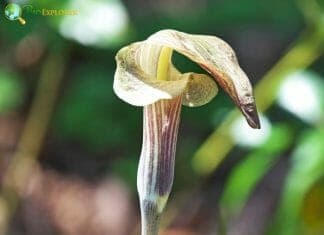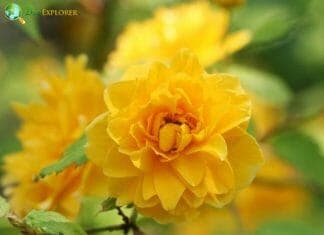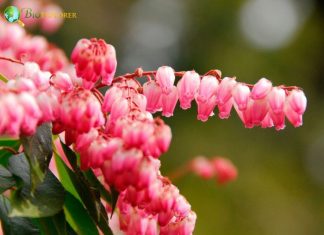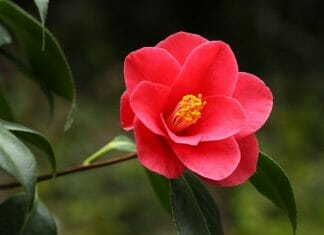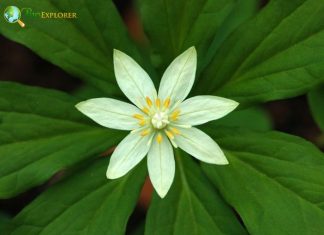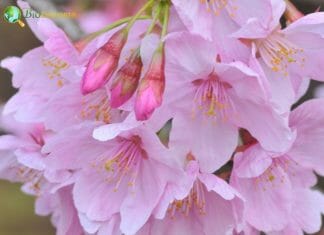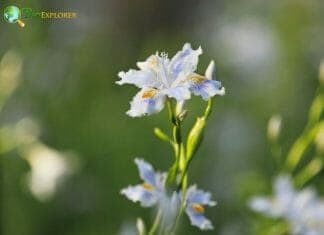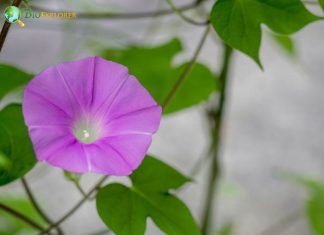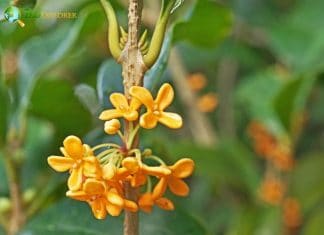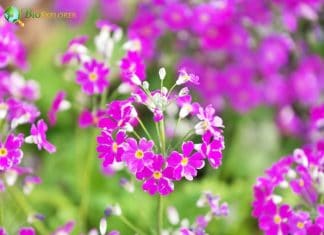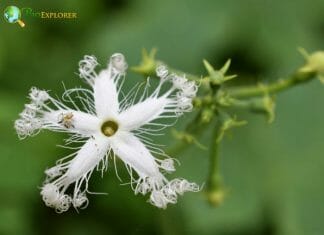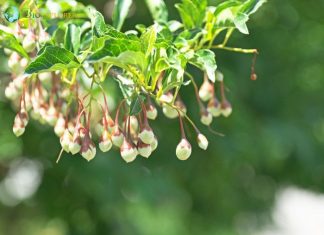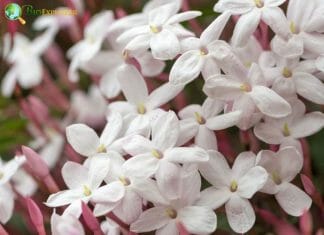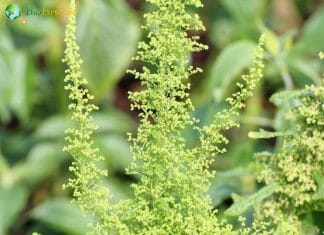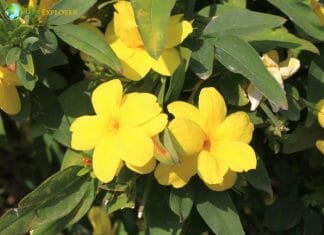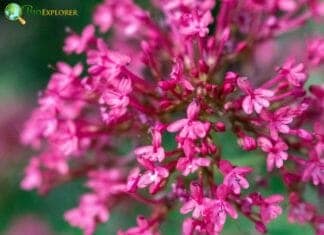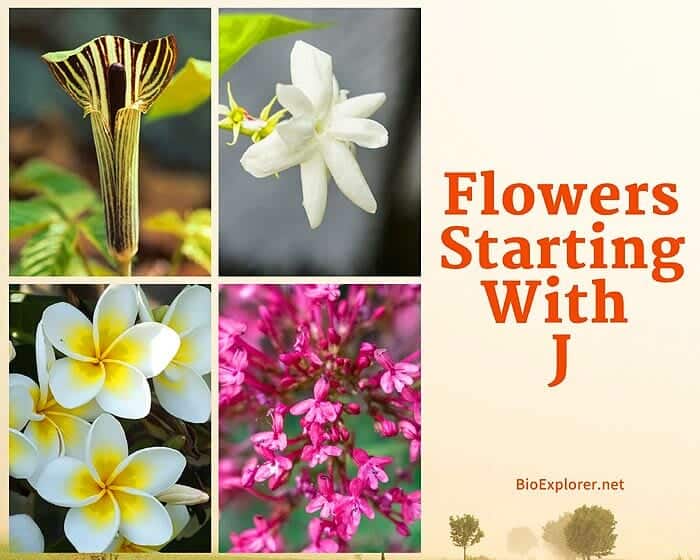
Gardening is a rewarding hobby, but it can take a lot of time, patience, and effort to transform your lawn into the garden you want. Flowering plants are one of the best ways to spread color, scent, and beauty around your yard for free. Here are some flowering species starting with J!
Some flowers are easy to grow, both indoors and in the garden. Because of this, many people enjoy growing flowers in their homes or yard. Some flowers are easy to grow indoors, and some are easier to grow outside. The difference has a lot to do with what that particular type of flower is accustomed to having in the wild or at a florist.
Flowers Starting with J
Here is the group of flowers starting with the letter J.
Jack-in-the-Pulpit
Flower Type: Perennials
Jack-in-the-Pulpit (Arisaema triphyllum) is a charming wildflower native to midwestern and eastern North America but easily grown in shady gardens elsewhere. The flower comes in purple, greenish-white, and green shades. Its bloom forms a club-shaped cluster of scarlet or red berries in autumn.
Jamaica plum
Jamaica Plum (Spondias mombin), also known as hog plum or yellow mombin, is a tree and flowering plant in the Anacardiaceae family. It originates from tropical America, including the West Indies. The sweet-scented flowers usually bloom from January to May. They are in large, loose terminal panicles with small purple to yellow flowers.
Japan Rose
Kerria japonica, also known as Japan rose or Japanese kerria, is a small ornamental shrub in the Rosaceae family native to Korea, Japan, and China. The flowers are a brilliant golden yellow with 5 petals, similar to the old-fashioned rose.
Japanese Andromeda
Flower Type: Shrubs/Trees
Japanese Andromeda is a plant native to Japan that can grow up to 1.5 to 4 m. It is a slow-growing shrub or tree under Ericaceae. The flowers are showy, and flower buds are bead-like in white. Some cultivars include a pink and deep rose.
Japanese Camellia
Flower Type: Shrubs/Trees
While many flowering shrubs (Camellia japonica) peak in Summer, the Camellia flower is endemic to Japan and it is unique because it mainly blooms in early spring and late winter. There are nearly 300 species of Camellia, the color of which includes white, pink, and red.
Japanese Canopy
Flower Type: Perennials
Paris japonica is a slow-growing perennial plant native to Japan with a height of 6-12 inches. Japanese Canopy plants have white and showy flowers in a pedicel. The flowers are star-shaped with 10 tepals.
Japanese Cherry Blossom
Flower Type: Trees
Cherry blossom (Japanese national flower) is a medium-sized tree that can grow to 15-25 feet. The spread is 4-8 meters. The tree is short-lived (15-20 years). It is native to Korea, China, and Japan. Cherry blossom signifies good luck, Love, and femininity.
Japanese Iris
Flower Type: Perennials
Iris japonica is a rhizomatous plant with a height of 0.75 to 1 foot and a spread of 1 to 1.5 feet that can grow in forest margins and wet grasslands. The Japanese Iris is named after the Greek goddess "Iris" because of its beauty. The name Iris also means rainbow.
Japanese Morning Glory
Flower Type: Annuals
Japanese morning glory is a climber plant with 5 meters. It has been a widely cultivated ornamental garden plant. In addition, growing Ipomoea nil is part of the curriculum of Japanese elementary students.
Japanese Orange Osmanthus
Flower Type: Shrubs/Trees
Japanese Orange Osmanthus is an evergreen shrub or tree that produces clusters of flowers with a powerful apricot fragrance. The flowers of the Japanese Osmanthus are tiny in axillary clusters and signify truth and a noble person in Japan.
Japanese Primrose
Flower Type: Trees
Japanese Primrose is called sakurasou in Japan because it resembles Sakura, the flowering cherry tree. The leaves of the Japanese Primrose possess a rosette arrangement. The hairy petiole measures 1.4-4.7 inches in length. It signifies first Love, youthful Love, and longing in Japan.
Japanese Snake Gourd
Flower Type: Trees
Trichosanthes is a perennial vine native to Japan. These thread-like flowers are aromatic and bloom from summer to early fall. The Trichosanthes cucumerina tangled with other plants or trees.
Japanese Snowbell
Flower Type: Trees
The Japanese Snowbell is a deciduous tree that can grow to 15-25 feet. The leaves of Styrax japonica are alternate and simple. They are broad-elliptic to elliptic-oblong. These leaves are medium to dark green with a measurement of 2.5-9 cm. long and 1.3 -4 cm wide.
Japheth Orchid
Cattleya orchids have a fantastic appearance that many plant lovers could not resist. The blooms are showy, prominent, fragrant, and come in various color patterns and colors. There are currently 35 natural hybrids and 46 recognized species of the genus Cattleya. These orchids are native to the tropics such as South and Central America.
Jerusalem Oak
Flower Type: Annuals
Jerusalem oak (Dysphania botrys) was previously classified in the Ambrosia genus, with the botanical name Ambrosia mexicana. The plant has several small, compact clusters of greenish-yellow flowers at the end of the stems that resemble a stinging nettle.
Jessamine
Native to the Southeastern United States, Jessamine (Gelsemium sempervirens) is a large vine for the landscapes. Jessamine grows 20 ft or more when cultivated as a vine. The fragrant, golden yellow flowers cover the finely structured cascading foliage from February through April.
Jupiter’s Beard
Flower Type: Perennials
Jupiter's Beard (Centranthus ruber) is well-known for its nearly uninterrupted flowering ability and extreme drought tolerance. This beautiful flower are loved for its ability to produce a showy white, pink, or crimson flowers tree, sometimes on barren soils from spring to frost.
Cite This Page
APA7MLA8Chicago
BioExplorer.net. (2025, May 27). Flowers Starting with J. Bio Explorer. https://www.bioexplorer.net/plants/flowers/j/.
BioExplorer.net. "Flowers Starting with J" Bio Explorer, 27 May 2025, https://www.bioexplorer.net/plants/flowers/j/.
BioExplorer.net. "Flowers Starting with J" Bio Explorer, May 27 2025. https://www.bioexplorer.net/plants/flowers/j/.


